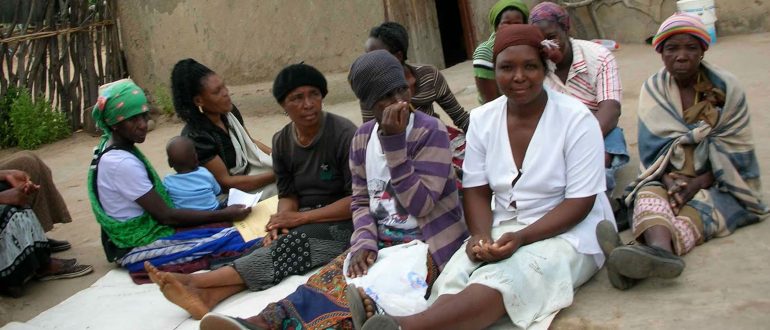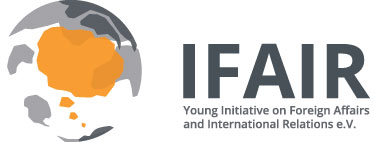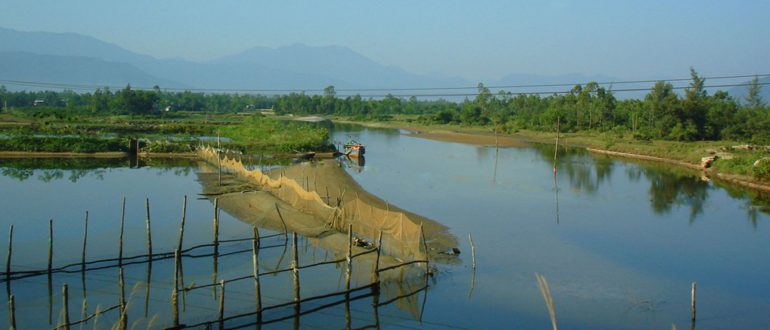
Lifting Up the African Poor by Promoting Microcredit Initiatives
Microcredit (or Microfinance) has proved its value in many countries as one of the major means of alleviating poverty. It has the potential to change people’s lives for the better as useful innovation and creativity are ubiquitous everywhere.
As the reputable thinker the late Prahalad (2002) once said, “The potential of human ingenuity and resourcefulness is abundantly available at all levels of the World Socio-Economic Pyramid.” I believe that a properly managed and widely out reached Microcredit industry can be one biggest contributor to the developmental continuum of the emerging economies such as those in Africa. As a result, successive global summits and conferences with ultimate goals of popularizing Microcredit activities have continued taking momentum since 1980s (Grameen Bank, 2010).
We can promote it in the Sub-Saharan Africa (SSA) in the way of pulling the African poor out of poverty by mobilizing their potentially immense but mostly unused human ingenuities, talents and capabilities. If we nurture Microcredit in the desired way by expanding its outreach to the grassroots level, the sunshine of beautiful Africa can reach the majority of its children who currently experience socio-economic hardships.
The vast majority of the population in SSA has continued suffering at the bottom tier of the World Socio-Economic Pyramid as poor and destitute (World Bank, 2012). It is very sad that several African nations have continued engaging excessively in facilitating wasteful and lavish lifestyle of the extremely small elite segment of their population. They have continued doing it by sacrificing the lion’s share of their hard earned resources and capabilities (including foreign currency) that otherwise can be used to improve the productive life of their populace at grassroots level. As Hammond and Prahalad (2003) said,“…if we stop thinking of the poor as victims or as a burden and start recognizing them as resilient and creative entrepreneurs and value-conscious consumers, a whole new world of opportunity will open up.”
Indeed, promoting active participation in productive and innovatory activities at the grassroots level is necessary for making Africa a better place for all of us. We can create millions of new entrepreneurs, productive producers and formidable consumers at the grassroots level. The pertinent question is: what should be done to eliminate poverty in SSA? The expected task is formidable but possible to confront if the available resources and capabilities are smartly mobilized in the best way of optimizing expected outcomes.
The Importance of Promoting Microcredit Initiatives
Since inception by the Nobel Laureate Mohammed Yunus in 1970s, Microcredit initiatives have become the popular strategic alternative for fighting poverty around the globe. All concerned stakeholders from government, external partners, the business community and civil society at large in SSA and around the globe have already recognized the powerful role of Microcredit at the grassroots level. To-day, there are thousands of Microcredit institutions with millions of clients globally and in the SSA nations such as Ethiopia, Kenya, Nigeria, Uganda, South Africa, Senegal, Ghana, etc (Stewart et al, 2010). The broad Microcredit service outreach initiatives at the grass roots level have brought a significant improvement in the lives of more than ten million poor citizens in Bangladesh alone (The Grameen Report, 2012). So far, the sources of loans in the form of Microcredit are predominantly from: government coffers, non-profit foundations and other helping hands of successful entrepreneurs locally and internationally. Still a lot should be done.
At this time the Microcredit industry has begun attracting the commercial banking industry in certain countries. Some notable multi-national financial institutions like Deutsche Bank are now expanding their involvement in the micro lending business to provide opportunities to the poor in their own do-main and elsewhere (Deutsche Bank, 2007). This asserts the growing involvement of the private sector in Microcredit activities. SSA nations can create initiatives working with the variety of influential Banks and other financial lending institutions at home and abroad.
Particularly, local banks should prudently consider engaging in helping the poor by allowing the financial access at that level instead of solely dealing with the obvious conventional banking bureaucracy. Africans have a locally rooted cultural wisdom of helping one another in all dimensions. The local rotational saving associations in many African societies such as Eddir in Ethiopia are worth mentioning (Aredo, 1993).
We need to consider that the definition of poverty is situational and case specific. It depends on: national developmental stages, advancement of the socioeconomic fabric and demographic attributes of a given environment. However, the arduous situation in many SSA nations gives solid evidence of the magnitude of poverty and the damage it has already inflicted on the basic social fabric of the populace with the negative impact on the socio-economic development. Poverty’s apparently detrimental effect, on the societal structural attributes and society peaceful and harmonious developmental life, is massive and debilitating. It should be gradually eliminated by popularizing Microcredit initiatives among others. Viable and dedicated Microcredit initiatives coupled with effective implementation course of actions and modalities can help SSA nations in their efforts to marginalize abject poverty and enhance socio-economic development. Africa has the potential and the ordinary African citizen is hardworking and wise. She or he needs support and demonstrative education that promotes the best way of producing socio-economic values.
Although Microcredit activities in the SSA are progressing modestly, they still have a long way to go. With proper promotion, development and popularization of Microcredit industry initiatives, thousands of urban and rural poor families particularly the economically active young can gainfully engage in productive self-help entrepreneurial activities. No doubt, the widespread dissemination of this kind of initiative can greatly help to speed-up the developmental continuum. Indeed, Microcredit has the potential to support millions of needy Africans to help themselves by engaging in self-supported gainful activities. As expressed above, Microcredit development in the continent is not as required so far. This is due to multi-dimensional factors pertaining to governance, political, institutional capacity, non-supportive attitude and numerous others (Van Rooyen, Stewart & de Wet, 2012). Policy makers and other stakeholders are mandated to recognize the potential contribution of Microcredit to marginalizing poverty and promoting economic development in the neediest parts of local communities. Therefore, it is generally possible to popularize Microcredit initiatives in the SSA as part of the efforts to support the broad poor citizens in order to help themselves by mobilizing their capabilities and initiatives. If this potentially powerful economic engine is properly organized and shaped, its role in marginalizing poverty will grow considerably (Ahlin, Lin & Maio, 2011).
The Challenges of Promoting Microcredit
Unfortunately, the growing formal financial markets in SSA have continued to neglect the majority of the poor in the continent. They do not benefit from affordable credit programs or receive training around proper management of personal finances. This weakness displayed by the limited financial system of every SSA nation to deliver basic credit outside the mainstream has contributed to the continued aggravation of poverty in SSA. Poverty and economic development are mainly about money, saving and credit availability. Mismanaging one’s meager money, not saving money and not having access to financing and credit are the root causes of many economic crises in the developing nations in general and that of Africa in particular. Therefore, the continued weakness and inability of the financial industry in the SSA nations has created a fertile ground for exacerbation of poverty, solidifying duality and socio-economic despair.
All SSA nations should treat the Microcredit credit industry as a solid alternative, where conventional finance industry fails or is less interested to provide the necessary services to a significant segment of the population. With full support and commitment of all stakeholders ranging from the governments to each concerned and able citizen, Microcredit can be one of promising anti-poverty strategies in the SSA. Of course, it will be a complex and intricate task to deal with. Understanding hindering factors in regard to popularizing Microcredit in the appropriate environments should be identified, articulated, and analysed in order to take appropriate action that can help microfinance to grow in the continent.
Conclusion
It is only with these comprehensive efforts we can help to push forward the development and outreach of microcredit at large to serve the broad needs of the appropriately targeted legitimate segment of the population. As I mentioned above, Africa is massively endowed in both human and physical resources and capabilities. Poverty should not be given a chance to flourish in this rich, but forced to remain poor, continent. Concerned stakeholders must join the poverty reduction multidimensional endeavors through the power of microcredit. It should be noted that empowerment of the poor through the power of microcredit initiatives is a formidable task that deserves further study and investigation for continuous improvement.
I believe that it is necessary to initiate and promote noble ideas to help the vulnerable and poor in SSA to transform themselves into potentially productive consumers, producers and self-helping entrepreneurs. All of us, who are able to support microfinance, have a noble responsibility to contribute our part towards the realization of this noble objective. No more poverty in the midst of our potentially extremely endowed continent affluence. Entrepreneurial innovation and resourcefulness of the African people should show the magic. Indeed, the future should be for the resourceful poor in this potentially very rich continent.
This Article was first published in The African Executive, where it can be found here.
References
Ahlin, C., Lin, J., & Maio, M. (2011). Where does microfinance flourish? Microfinance institution performance in macroeconomic context. Journal of Development Economics, 95(2), 105-120.
Aredo, D. (1993). The informal and semi-formal financial sectors in Ethiopia: a study of the Iqqub, Iddir, and savings and credit co-operatives. African Economic Research Consortium.
Deutsche Bank Research (2007): “Microfinance: An emerging investment opportunity”, Current Issues, Deutsche Bank Research, Frankfurt, Deutsche Bank Publications
Duvendack, M., Palmer-Jones, R., Copestake, J. G., Hooper, L., Loke, Y., & Rao, N. (2011). What is the evidence of the impact of microfinance on the well-being of poor people?
Grameen Bank. (2010). Annual Report, 2009.Dhaka: Grameen Bank Publications (2011:http://www.grameen-info.org/)
Grameen Bank. (2012). Annual Report, 2011. Bank Dhaka: Grameen Bank Publications (2011:http://www.grameen-info.org/)
Hammond, A., & Prahalad, C. K. (2003). What works: Serving the poor, profitably. white paper), World Resources Institute, http://pubs.wri. org/pubs_content_print. cfm.
Hermes, N., & Lensink, R. (2011). Microfinance: its impact, outreach, and sustainability. World Development, 39(6), 875-881.
Prahalad, C. K., & Hammond, A. (2002). Serving the world’s poor, profitably. Harvard business review, 80(9), 48-59.
Stewart, R., van Rooyen, C., Dickson, K., Majoro, M., & de Wet, T. (2010). What is the impact of microfinance on poor people? a systematic review of evidence from sub-Saharan Africa.
Van Rooyen, C., Stewart, R., & de Wet, T. (2012). The impact of microfinance in sub-Saharan Africa: a systematic review of the evidence. World Development, 40(11), 2249-2262.
World Bank. (2012). Financing Businesses in Africa: The Role of Microfinance. Washington: World Bank Publications.

